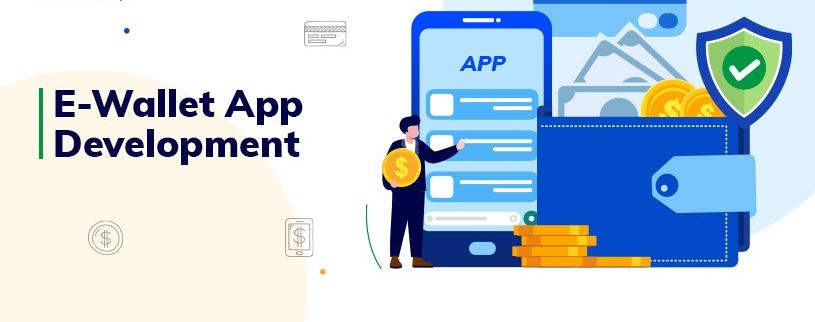Today the realms of the landscape of the fintech industry say that e-wallet app development stands as a transformative force, weaving itself into the fabric of global commerce. Beyond a mere convenience, e-wallets are a testament to humanity’s pursuit of efficiency and security in financial transactions. As the digital payment ecosystem burgeons, with forecasts predicting over 4.8 billion users globally by 2025, the imperative to innovate in this domain transcends competition—it defines relevance. For visionaries in technology and finance, the development of an e-wallet app represents not just a technological undertaking but a pivotal stride in the ongoing reshaping of global economic landscapes.
The Essence of E-Wallet App Development
At its core, e-wallet app development encapsulates the creation of digital platforms designed to facilitate secure, seamless monetary transactions. These applications empower users to:
- Conduct cashless payments for goods and services.
- Execute peer-to-peer transfers and settle bills effortlessly.
- Integrate with financial institutions, third-party platforms, and loyalty programs.
The accelerating demand for such solutions is a testament to the evolving expectations of consumers, who prioritize speed, accessibility, and trust in their digital financial interactions.
Indispensable Features for E-Wallet App Success
An e-wallet app must exceed user expectations by integrating cutting-edge features that balance functionality with user engagement. Consider the following table of essential components:
Feature Purpose
User Authentication Streamlined registration with robust verification methods like biometrics or OTPs.
Encryption Protocols Advanced data protection for safeguarding sensitive financial information.
QR Code Functionality
Instant, user-friendly payment processing.
Transaction History Transparent, detailed records for user trust. Push Notifications Timely alerts on transactions, promotions, and security updates.
Integration Capabilities
Synchronization with banks, cards, and third-party services.
Reward Systems Gamified incentives to enhance user retention and loyalty.
Categorization of E-Wallet Applications
E-wallets are not monolithic; they cater to diverse consumer and business needs. Understanding these types is crucial for targeted development:
- Closed Wallets: Exclusive to a specific platform or merchant (e.g., Starbucks). 2. Semi-Closed Wallets: Usable across a network of approved merchants (e.g., Paytm). 3. Open Wallets: Fully interoperable, allowing transactions across merchants, banks, and wallets (e.g., PayPal, Apple Pay).
Navigating the Development Process
Developing an e-wallet app requires a meticulous approach, encompassing both technical precision and strategic foresight. Below is a step-by-step roadmap:
- Conduct Comprehensive Market Analysis
○ Identify gaps in the market and untapped user demands.
○ Study successful competitors for feature insights.
- Define Core Functionalities
○ Prioritize user-centric features like seamless navigation and security enhancements.
- Select the Right Technological Framework
○ Opt for robust tools like React Native, Flutter, or Kotlin for app development.
○ Integrate payment gateways (e.g., Stripe, PayPal) and compliance frameworks. 4. Design a Captivating UI/UX
○ Create a visually appealing, intuitive interface to maximize user satisfaction. 5. Develop the Application
○ Coordinate frontend and backend development, ensuring secure, scalable architecture.
- Implement Rigorous Security Standards
○ Use AES encryption, tokenization, and regular vulnerability assessments. 7. Thorough Testing
○ Simulate real-world scenarios to evaluate the app’s functionality, security, and performance.
- Launch and Optimize
○ Deploy the app on relevant platforms and continuously refine it based on user feedback.
Technological Foundations for E-Wallet Applications
A robust technological stack is the backbone of any successful e-wallet application. Below are some recommendations:
Component Options
Frontend Framework React Native, Flutter
Backend Framework Node.js, Ruby on Rails
Database MongoDB, PostgreSQL
Payment Gateways Stripe, Razorpay, PayPal
Security Firebase Authentication, Auth0
APIs Twilio (notifications), Plaid (banking)
Key Challenges and Mitigation Strategies
Despite its potential, e-wallet app development presents several challenges: Challenge Solution
Security Vulnerabilities
Deploy encryption protocols, tokenization, and multi-factor authentication.
Regulatory Hurdles Ensure compliance with regional standards like PCI DSS or GDPR.
Market Penetration Utilize targeted marketing strategies and user incentives to drive adoption.
Forecasting the Evolution of E-Wallets
The trajectory of e-wallets suggests a future characterized by:
- Blockchain Integration: Promising unparalleled transparency and security. ● AI-Powered Personalization: Tailored financial insights and recommendations. ● Voice-Activated Payments: Redefining convenience with hands-free interactions.
These innovations signify an era where e-wallets evolve from mere tools to indispensable components of digital lifestyles.
Expert Insight: The Non-Negotiable Priority of Security
“In the digital payments space, user trust hinges on one factor above all: security,” explains fintech strategist Alexandra Novak. “From advanced encryption to real-time fraud detection, every element of your e-wallet must be built with user safety as the cornerstone. Neglecting this is akin to inviting failure.
Conclusion
E-wallet app development is more than an opportunity—it is a necessity for staying competitive in today’s fintech ecosystem. By combining user-focused features, cutting-edge technology, and an unwavering commitment to security, you can craft an application that not only thrives but defines the future of digital payments.
Go Deeper:
- Explore Statista’s projections for global mobile wallet adoption.
- Learn about PCI DSS compliance for secure payment infrastructure. 3. Stay updated with Finextra’s insights on fintech innovations.
Take the leap today, and redefine the way the world transacts!




